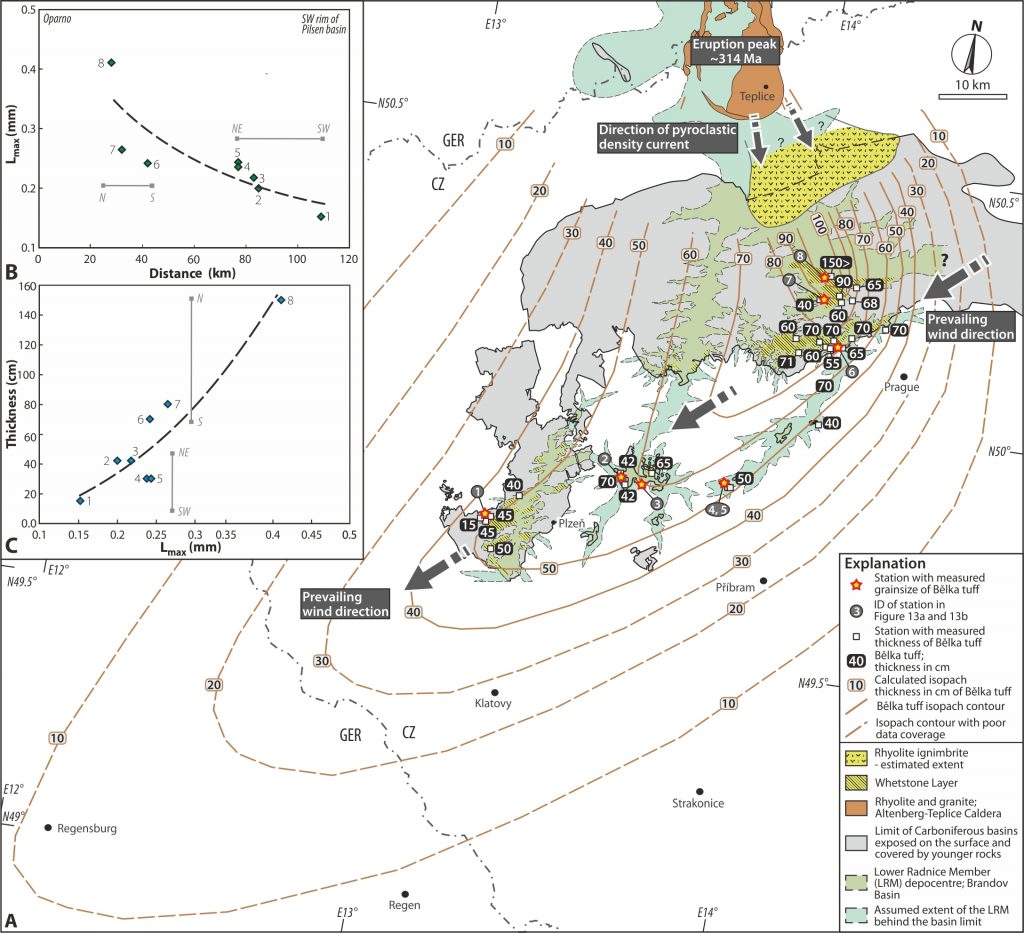 The famous Bělka tuff is a widespread pyroclastic layer preserved elsewhere in the central and western Carboniferous late- to post-orogenic basins. This tuff represents a unique stratigraphic marker documented from tens of boreholes and numerous black coal mines within a large area between the southern edge of the Pilsen Basin in western Bohemia to the eastern part of the Kladno-Rakovník Basin over a distance of 100 km. However, its volcanic source was until now unclear. In a new study by Tomek et al. published in International Geology Review, a multidisciplinary approach using the LA-ICP-MS U/Pb zircon dating, thickness and grain size distribution analysis, and volume calculation suggested that the source volcano is the Altenberg–Teplice Caldera located at Czech-German border in the NW Bohemian Massif. In detail, this volcano erupted a major caldera-forming ignimbrite eruption with an estimated volcanic explosivity index 7 (out of 8) at 314 Ma. The pyroclastic density currents travelled over a distance of ca. 60 km towards the area of Oparno valley (Porta Bohemica). From here, the northeastern winds distributed the volcanic ash cloud towards the southwest, where the ash was deposited in the sedimentary basins. The isopach reconstruction indicate that for instance in Regensburg (Germany), there was a 10 cm thick ash layer that originated from the Altenberg–Teplice Caldera nearly 220 km away.
The famous Bělka tuff is a widespread pyroclastic layer preserved elsewhere in the central and western Carboniferous late- to post-orogenic basins. This tuff represents a unique stratigraphic marker documented from tens of boreholes and numerous black coal mines within a large area between the southern edge of the Pilsen Basin in western Bohemia to the eastern part of the Kladno-Rakovník Basin over a distance of 100 km. However, its volcanic source was until now unclear. In a new study by Tomek et al. published in International Geology Review, a multidisciplinary approach using the LA-ICP-MS U/Pb zircon dating, thickness and grain size distribution analysis, and volume calculation suggested that the source volcano is the Altenberg–Teplice Caldera located at Czech-German border in the NW Bohemian Massif. In detail, this volcano erupted a major caldera-forming ignimbrite eruption with an estimated volcanic explosivity index 7 (out of 8) at 314 Ma. The pyroclastic density currents travelled over a distance of ca. 60 km towards the area of Oparno valley (Porta Bohemica). From here, the northeastern winds distributed the volcanic ash cloud towards the southwest, where the ash was deposited in the sedimentary basins. The isopach reconstruction indicate that for instance in Regensburg (Germany), there was a 10 cm thick ash layer that originated from the Altenberg–Teplice Caldera nearly 220 km away.
Tomek F., Opluštil S., Svojtka M., Špillar V., Rapprich V., Míková J. (2021): Altenberg–Teplice Caldera sourced Westphalian fall tuffs in the central and western Bohemian Carboniferous basins (eastern Variscan belt). International Geology Review in press. (DOI)








